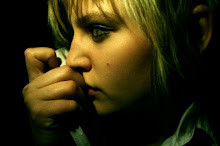When I was on my foundation course, a girl in my group had done a project when she photographed the mass of torn papers left where the take down the posters on tube platforms, before they put up new ones. She made paintings of them, recognising the interesting shapes and compositions that had been made by accident. I saw a whole bunch of these when my boyfriend took me to see 'Where the Wild Things Are' in Marble Arch, and I took a lot of photographs. I was interested in how something that had happened by chance could be visually so aesthetically pleasing. I felt like the accumulated layers suggested time passed, repetitions, everyday routines. I tried to make a method where I could achieve something aesthetically similar, but using rules and chance to prevent me from making decisions aesthetically, so the result would still be accidental. I made a very complex system of multiple dice throws and picking random options from a cup [every 6 'go's], using 6 different media, 6 different surfaces, 6 different ways for each to be applied and 6 ways to destroy the current layer. I wanted my 'layer game' to capture time passing, but was unsurehow to mark a start and a finish. I could only be in the studio for 11 hours at most, but I didn't think this was long enough to create the number of layers I was hoping for. I would also need to wait, in between applying layers, for paint or wallpaper paste to dry. How often should I add a new layer? What would it mean if I stopped overnight and continued the next day?
To resolve these issues I decided to mark out time by reading a book - therefore, the work would document the passage of time in the book, and time would only be 'ticking' while I was reading, allowing me to break when necessary wihtout disrupting the continuous process of the work. The dice had resulted in multiples of 6 in my rule-making, so I decided to add a layer every 6 pages. The book I had chosen, Jack Kerouac's 'On The Road' [still a kind of travelling artwork, then] began on page 7. Sal travelled south on Route 66. I started to make notes of these kind of coincidences, and write them on the current layer.
But the work did not do what I wanted. I didn't feel anything towards it, it was just what had been left at the end of a long and complicated process, but it suggested to me none of that process. It didn't achieve the aesthetic result I had desired either. I had a tutorial with Kathryn, who was now my tutor. She pointed out the obvious contradiction in using rules and restrictions to reveal chance and accident, and suggested that maybe I move away from traditional media and try and work out when chance made a difference. I needed to 'catch' chance happening rather than showing what was left. I tried following one of the finished drawing games as a map, and documenting what I saw. But this was still too retrospective, too planned. I decided to try experimenting with anything that took my fancy to try and make chance reveal itself. I scattered letters on a page and spray-painted around them to mark what they had written [always nonsense]. I bound pages of this non-text into a small book. I still didn't feel like anything was really happening by chance. Kathryn had pointed out that I hadn't looked at any other artists work recently and thta this might help me. I looked at Dada and Gutai as movements that had embraced chance. I found Tristan Tzar's 'How to make a Dadaist poem'. This involved cutting up a newspaper article and picking the words randomly from a bag to make a new sentence. I thought, the sentence was what was left. Chance was happening in the bag. So I filled a plastic bag with text and put my camera in, filming while I shook the back around. The film I made caught glimpses of words that the eye could never really settled on, though i slowed it down to half speed. I edited several clips together and experimented with different soundtracks, settling on the sound taken from another clip where I walked around uni with the camera swinging from my wrist. I felt like the film was a step in the right direction, but I had not solved the problem yet.
I was tidying up my room the night before our group presentations when I noticed a false eyelash was stuck to my carpet. I thought it was pretty funny, it would be funnier if I added a little eye to go with it.... why not? I made a paper eye. I made another paper eye, stuck the other eyelash next to it. My carpet stared up a me.
I suddenly felt like this was something, this spontaneous decision to recognise chance and respond to it, to act on a whim.











